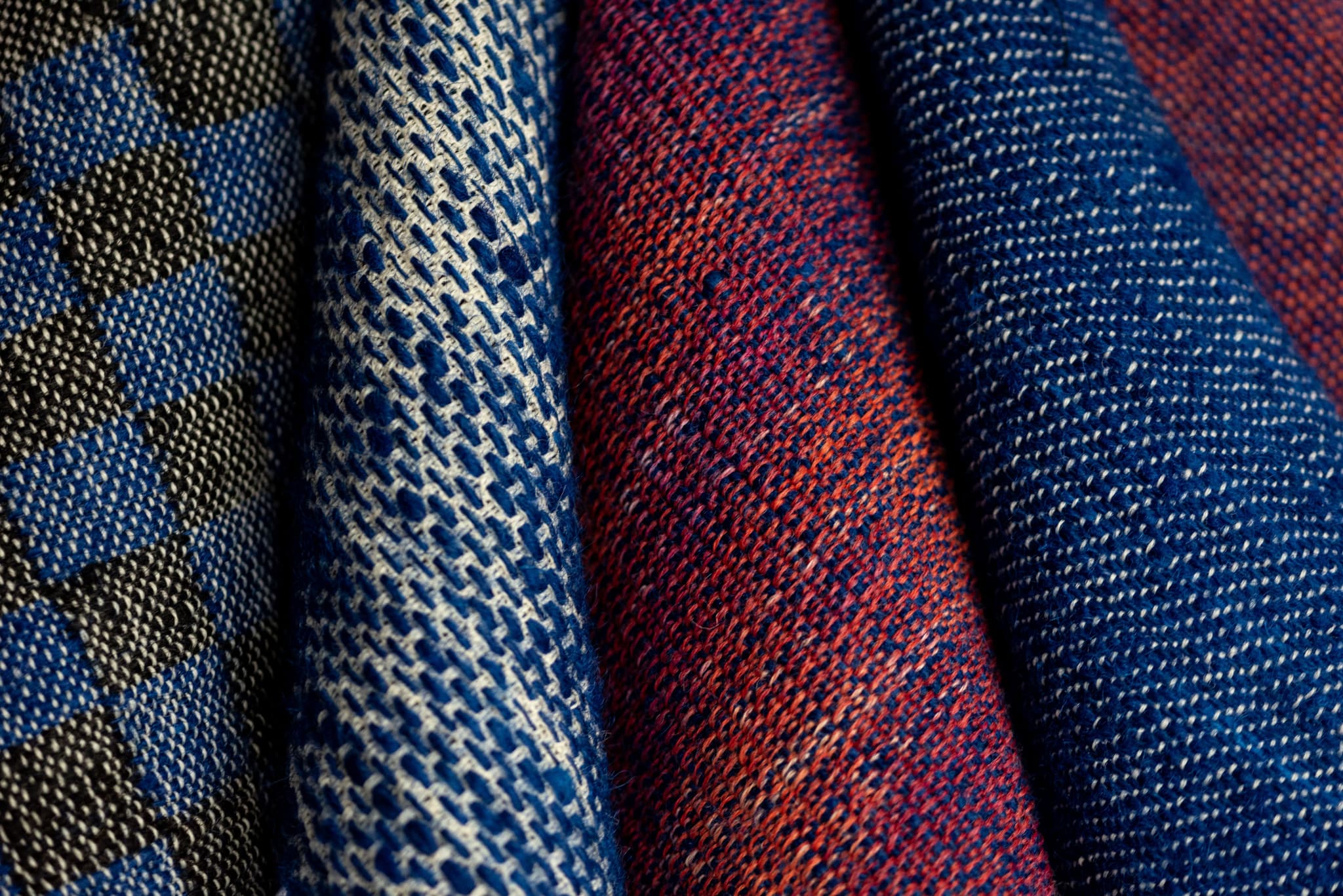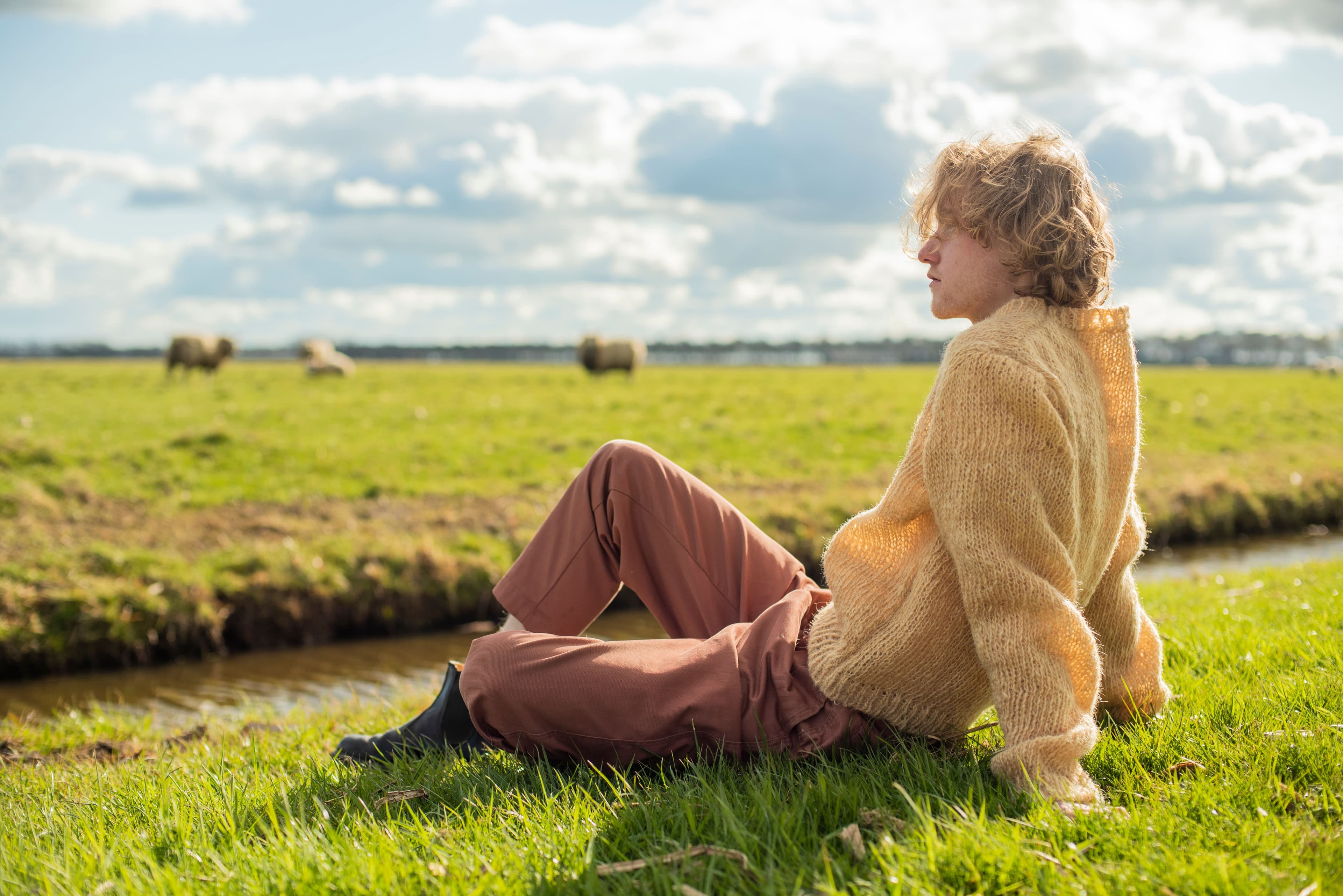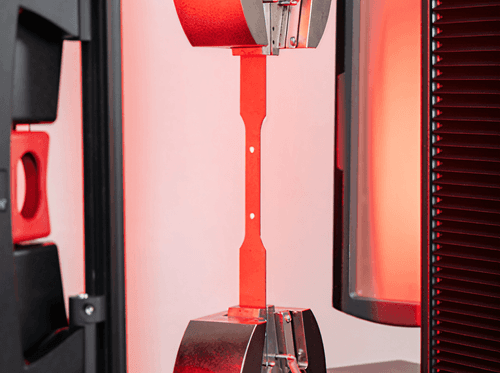Human Material Loop work blurs the line between material innovation and philosophical inquiry. How do you see the role of design in reshaping not just objects, but societal values and narratives?
For us, design is not just about creating things—it’s about cultivating meaning. Human Material Loop is a framework that reimagines design as a space where philosophy, science, and ecology converge.
It stands on three interconnected pillars:
- Human — the thinker, the questioner, the mind. This is the space of reflection, of ethics, of philosophical inquiry.
- Material — the innovator, the maker, the body of knowledge—performance, technology, and transformation.
- Loop — the ecosystem, the regeneration, the rhythm of sustainability. This is where life flows—cyclical, respectful, interconnected.
Together, these elements form a living system. Human Material Loop is not a linear process—it’s a circular, conscious design philosophy that insists on responsibility and relationship at every stage.
Today, we live in a world where one person’s organ can continue its rhythm inside another. This is more than medical science—it is a radical testament to our interdependence. A heart that once pulsed in one body now sustains another. In this act, we see the Human (our shared vulnerability), the Material (the medical knowledge that enables this), and the Loop (the continuity of life through one another).
Science, at its best, becomes a language of connection—not control. It reminds us we are not isolated systems, but part of a wider living network. This idea lies at the very core of the Loop: that existence is shared, that innovation must serve life beyond the individual.
But there is another side to innovation. The same intelligence that allows us to transplant a heart also built the atomic bomb. When we prepared the Fat Man in 1945, we witnessed science as a triumph of material knowledge—but a collapse of human wisdom and ethical looping. It was a break, not a continuation.
So Human Material Loop also asks: where do we draw the line between possibility and responsibility? What kind of future are we designing—and who is included in its promise?
Science is not neutral. It reflects the values of its makers. It can serve regeneration or destruction, care or control, communion or conquest. In the Loop, we believe that innovation must be rooted in reflection. That the question is not only can we, but should we—and for whom?
To design within Human Material Loop is to accept that every object, every system, every material choice carries ethical and ecological weight. It’s a design language that treats life not as something to be optimized, but something to be honored.
Ultimately, Human Material Loop teaches us this: progress without care is not progress—it is rupture. Innovation without reflection is not advancement—it is erasure. But when science and philosophy walk together, when the human and the material move in a regenerative loop, we don’t just create better products—we shape better futures.
How have you approached shifting public perception around so-called ‘Matter Out Of Place’ such as hair?
Just as it takes a village to raise a child, it takes a collective to usher innovation into the world.
At Human Material Loop, we believe innovation is not just the introduction of a new product—it is the transformation of thought, of material, and of perception. It is a shift in how we see, make, and relate. But transformation is rarely comfortable. It requires unlearning as much as inventing. It demands that we step into uncertainty, that we stay open to discomfort, and that we reframe what we’ve been taught to discard.
ādara™ is our first fiber. A new protein fiber made from discarded human hair—a material often labeled as matter out of place. Hair is deeply personal, yet once separated from the body, it becomes taboo. It is both intimate and abject, a symbol of identity and a byproduct of life.
We chose hair because it forces a conversation. Culturally loaded, emotionally charged, yet materially abundant, hair sits at the edge of acceptability. And that edge is exactly where we believe innovation begins—not with what is easy, but with what is necessary to question. In contrast, materials like fossil-fuel-based polyester are seamlessly integrated into our lives, even in spaces like yoga, which claim values of mindfulness and harmony. This, too, is a kind of dissonance. Polyester—so misaligned in its production and impact—is normalized, while something as natural and personal as hair is rejected. This paradox lies at the heart of our inquiry.
This cultural paradox is exactly what ādara™ seeks to unravel. If polyester is normalized, why is hair—so human, so available—cast aside?
With ādara™, we ask: What is waste? What is value? What are we willing to touch, to honor?
In the hands of our designers, hair is not discarded—it is transformed. Twisted into fiber, woven into form, polished into possibility. The process is a quiet alchemy: turning something overlooked into something extraordinary. A material of memory, of presence, of potential.
ādara™ is not just a textile—it is a shift. A challenge. A reimagining of what materials can be, and what they can mean. It invites us to rethink our assumptions, to embrace the unfamiliar, and to recognize that progress is not just what we make—
It’s how we change along the way.

From a material science perspective, what were some of the most surprising and useful discoveries about the properties of human hair as a textile fibre?
Human hair is an incredibly sophisticated material. Its core protein, keratin, is extremely complex—this presents challenges, but also unique advantages. Once cleaned, hair is high in tensile strength, naturally pure, and remarkably resilient, with an endless shelf life when properly processed.
Its lack of contamination, structural integrity, and ability to exist outside the body for decades make it an ideal, stable raw material. With ādara™, we’re not just transforming hair—we’re revealing its untapped potential as a high-performance, meaningful fiber.
Could you walk us through the core steps of your proprietary process—how does waste hair become a functional, high-performance material, and what design principles guide that transformation?
Our proprietary process for creating ādara™ involves two key stages: a chemical and a mechanical transformation of waste human hair. First, the hair is thoroughly cleaned and decontaminated, preserving the complex keratin structure while ensuring purity and long-term stability.
Then, through precise mechanical processing, the hair is refined into a spinnable, functional fiber. This method is guided by two core principles: environmental responsibility—minimizing impact throughout—and economic scalability—ensuring the process can grow sustainably. The result is a high-performance material that redefines hair not as waste, but as a valuable, regenerative resource.

How does human hair compare to conventional fibres such as wool or synthetics when it comes to characteristics like strength, thermal properties, and finish versatility?
ādara™ offers a unique combination of high strength and extreme flexibility, outperforming many natural fibers and rivaling synthetics—without the environmental cost. It proves that human hair, when properly processed, is not just viable but exceptional as a textile fiber.

You’re implementing a decentralised, localised production model. What impact does this have on traceability, supply chain resilience, and sustainability in textile manufacturing?
By sourcing and processing materials—like human hair—locally, we gain full traceability from origin to output. We know where the material comes from, who handles it, and how it’s transformed. This transparency builds trust and accountability into the system.
In terms of resilience, decentralisation reduces dependency on global logistics and volatile supply chains. Localised nodes can operate independently, adapt quickly, and respond to regional needs, making the system less vulnerable to disruption.
From a sustainability perspective, this model drastically cuts transport emissions, supports circular economies, and empowers local communities by turning waste into a resource. It redefines textile manufacturing not as a linear process of extraction and export, but as a regenerative, place-based practice—aligned with both ecological systems and cultural context.
Collaboration seems central to your model—from hair salons to manufacturers and scientists. What have been the most unexpected insights and feedback from working across and connecting such diverse industries?
It may sound like a cliché, but the more diverse the chain, the richer the ideas—and the deeper the support. What began as a collaboration between seemingly disconnected industries—hair salons, material scientists, designers, and manufacturers—has revealed just how interconnected they truly are. Bringing these communities together has not only shown us the power of collective knowledge, but also created space for unexpected insights and innovation.
Each partner brings a unique lens, and when those perspectives overlap, you don’t just generate new ideas—you build a stronger, more inspired, and more resilient force for change. It’s no longer about working in silos; it’s about building a shared ecosystem where creativity, science, and sustainability can truly thrive.
How do you navigate the regulatory landscape around introducing a novel biomaterial? Are there particular hurdles in certification, safety, or scaling you’ve encountered?
Like with anything truly new, introducing a novel biomaterial like ādara™ means navigating a complex and often unclear regulatory landscape. There are many layers to consider—certifications, safety standards, and compliance protocols—most of which were not designed with materials like human hair in mind.
We conduct extensive testing, not only to meet regulatory requirements, but to ensure the safety, hygiene, and performance of the material at every stage. These tests are crucial, especially as we move toward scaling and integrating into established manufacturing systems.
One of the biggest challenges is that there’s no existing category for what we’re doing, which means we’re often building the path as we walk it—consulting with specialists, adapting frameworks, and pushing for updated standards that reflect new, regenerative materials. It’s not always easy, but it’s part of the responsibility that comes with innovation.

Looking ahead 30 years from now, what currently unthinkable or overlooked materials do you envision—or hope—to see integrated into everyday products as part of a truly circular material economy?
Looking 30 years ahead, I hope we’ll live in a world where the concept of waste no longer exists—where every material is seen as potential, not discard. Just as organ transplants and blood donations were once rare and are now routine, I believe we’ll normalize using materials that today still seem unthinkable or overlooked.
It's hard to predict exactly which materials will rise, but I believe the key lies in reviving ancestral knowledge—particularly Indigenous material practices that were rooted in circularity long before sustainability became a modern buzzword. Sometimes it feels like we’ve lost touch with that wisdom. Did you know the Incas wove human hair into fabric? That kind of thinking—resourceful, respectful, deeply connected to place—needs to guide our future innovations.
My hope is that in 30 years, we will have eliminated toxic, fossil-based materials from our daily surroundings. Instead, we’ll live with materials that are safe, regenerative, and designed with care—not just for function, but for the ecosystems and communities they are part of.








